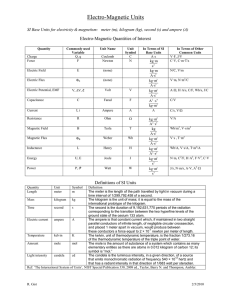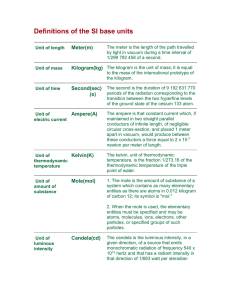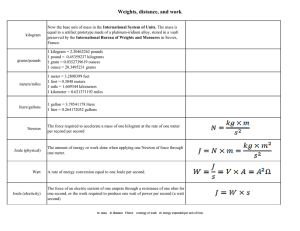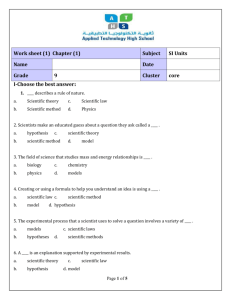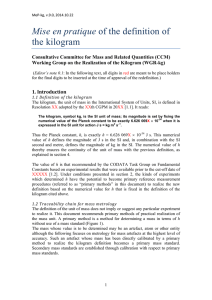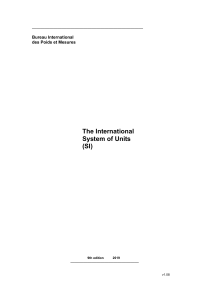A Brief History of the Development of the SI Units
advertisement
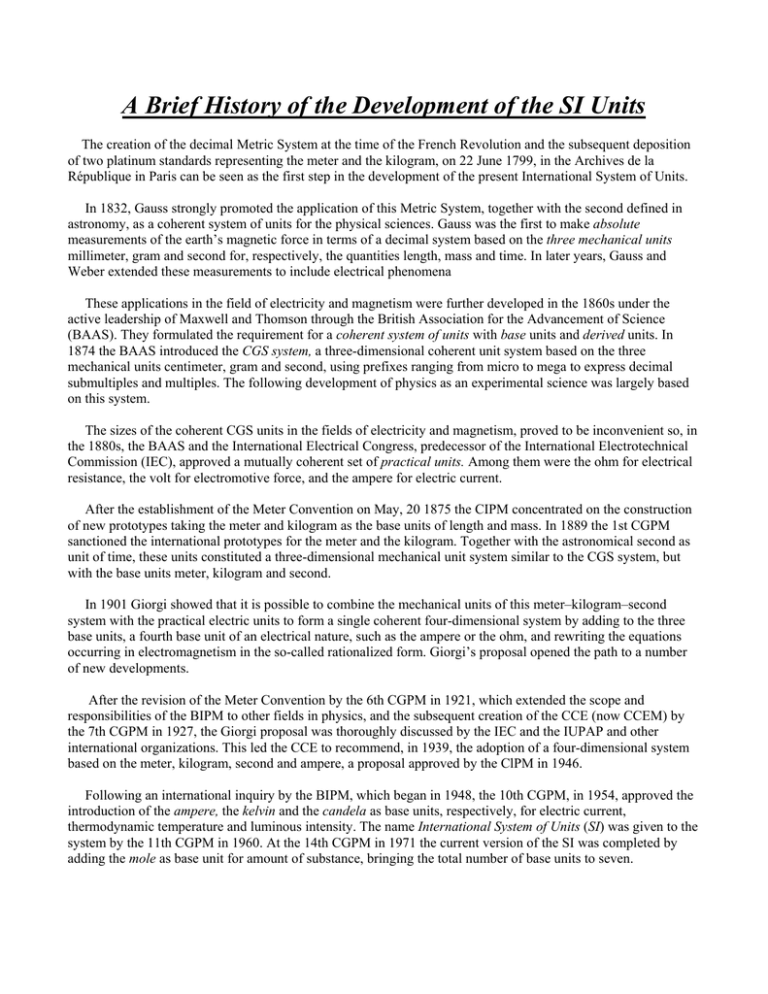
A Brief History of the Development of the SI Units The creation of the decimal Metric System at the time of the French Revolution and the subsequent deposition of two platinum standards representing the meter and the kilogram, on 22 June 1799, in the Archives de la République in Paris can be seen as the first step in the development of the present International System of Units. In 1832, Gauss strongly promoted the application of this Metric System, together with the second defined in astronomy, as a coherent system of units for the physical sciences. Gauss was the first to make absolute measurements of the earth’s magnetic force in terms of a decimal system based on the three mechanical units millimeter, gram and second for, respectively, the quantities length, mass and time. In later years, Gauss and Weber extended these measurements to include electrical phenomena These applications in the field of electricity and magnetism were further developed in the 1860s under the active leadership of Maxwell and Thomson through the British Association for the Advancement of Science (BAAS). They formulated the requirement for a coherent system of units with base units and derived units. In 1874 the BAAS introduced the CGS system, a three-dimensional coherent unit system based on the three mechanical units centimeter, gram and second, using prefixes ranging from micro to mega to express decimal submultiples and multiples. The following development of physics as an experimental science was largely based on this system. The sizes of the coherent CGS units in the fields of electricity and magnetism, proved to be inconvenient so, in the 1880s, the BAAS and the International Electrical Congress, predecessor of the International Electrotechnical Commission (IEC), approved a mutually coherent set of practical units. Among them were the ohm for electrical resistance, the volt for electromotive force, and the ampere for electric current. After the establishment of the Meter Convention on May, 20 1875 the CIPM concentrated on the construction of new prototypes taking the meter and kilogram as the base units of length and mass. In 1889 the 1st CGPM sanctioned the international prototypes for the meter and the kilogram. Together with the astronomical second as unit of time, these units constituted a three-dimensional mechanical unit system similar to the CGS system, but with the base units meter, kilogram and second. In 1901 Giorgi showed that it is possible to combine the mechanical units of this meter–kilogram–second system with the practical electric units to form a single coherent four-dimensional system by adding to the three base units, a fourth base unit of an electrical nature, such as the ampere or the ohm, and rewriting the equations occurring in electromagnetism in the so-called rationalized form. Giorgi’s proposal opened the path to a number of new developments. After the revision of the Meter Convention by the 6th CGPM in 1921, which extended the scope and responsibilities of the BIPM to other fields in physics, and the subsequent creation of the CCE (now CCEM) by the 7th CGPM in 1927, the Giorgi proposal was thoroughly discussed by the IEC and the IUPAP and other international organizations. This led the CCE to recommend, in 1939, the adoption of a four-dimensional system based on the meter, kilogram, second and ampere, a proposal approved by the ClPM in 1946. Following an international inquiry by the BIPM, which began in 1948, the 10th CGPM, in 1954, approved the introduction of the ampere, the kelvin and the candela as base units, respectively, for electric current, thermodynamic temperature and luminous intensity. The name International System of Units (SI) was given to the system by the 11th CGPM in 1960. At the 14th CGPM in 1971 the current version of the SI was completed by adding the mole as base unit for amount of substance, bringing the total number of base units to seven.
